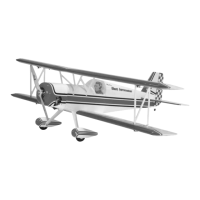
Do you have a question about the GREAT PLANES Giant Aeromaster ARF and is the answer not in the manual?
| Brand | GREAT PLANES |
|---|---|
| Model | Giant Aeromaster ARF |
| Category | Toy |
| Language | English |
Encourages joining the Academy of Model Aeronautics for benefits like liability protection and access to resources.
Outlines different radio setup options (2, 4, or all-out computerized) for controlling the model's functions.
Lists necessary hardware and accessories like propellers, foam rubber, and weights needed to complete the model.
Lists essential adhesives and building supplies such as CA glues, epoxy, threadlocker, and assorted drill bits.
Provides guidance on fitting parts, glue selection, epoxy types, hardening holes, and interpreting photos.
Details how to order replacement parts via hobby dealer, mail-order, phone, or email, including contact information.
Instructs users to inventory all kit parts, check for damage, and contact support if items are missing or defective.
Details the process of attaching ailerons to the wing panels using hinges and epoxy, ensuring proper alignment.
Guides on installing the horizontal stabilizer and fin to the fuselage, ensuring proper alignment and bonding.
Guides on installing elevator servos, pushrods, and connecting them to the control horn and servo arm.
Provides instructions for mounting a gas engine, focusing on alignment and securing to the firewall.
Explains how to position, trace, trim, and glue the hardwood cowl mounting blocks to the fuselage.
Guides on attaching the bottom wing and the interplane/N-strut mounting brackets to the fuselage.
Guides on installing the pilot figure in the cockpit and attaching the canopy to the fuselage.
Explains how to wrap and secure the receiver and battery pack within the fuselage for proper operation.
Provides instructions for cutting and applying decals accurately, using soap and water to aid positioning.
Instructs to verify that all control surfaces move in the correct direction and are centered via radio setup.
Details how to measure and set control surface throws (deflection) for elevator, rudder, and ailerons according to recommended rates.
Explains how to balance the model side-to-side by adding weight to the lighter wing tip for better flight tracking.
Emphasizes the importance of marking the model with owner information for identification at flying sites.
Advises on properly charging transmitter and receiver batteries, including initial conditioning for optimal performance.
Lists crucial safety measures related to handling fuel, running engines, and propeller safety to prevent injury.
Provides excerpts from the AMA Safety Code covering general flying conduct and radio control practices.
Defines "Giant-Scale" aircraft based on wingspan and scale requirements for IMAA events.
Summarizes key sections of the IMAA Safety Code including Safety Standard, Safety Review, Spotter/Helper, and Radio Requirements.
A comprehensive list of checks covering fuelproofing, CG, battery mounting, antenna, controls, and linkages.
Recommends richening the engine mixture to prevent overheating, especially with cowled engines.
Guides on performing practice ground runs, advancing throttle, and lifting off smoothly, managing torque.
Discusses the model's flying behavior, recommending gradual acclimatization, trim adjustments, and practicing maneuvers.
Details initiating a landing approach, bleeding off altitude, maintaining airspeed, and executing the flare.
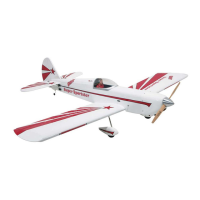
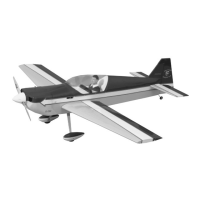
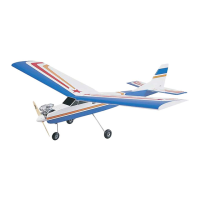
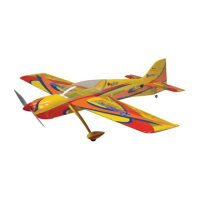
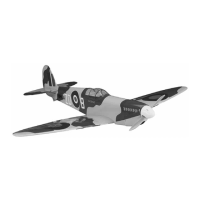
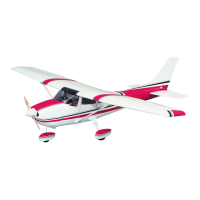
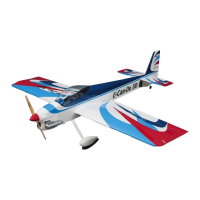
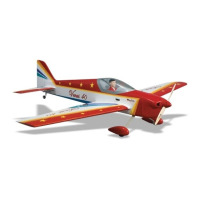
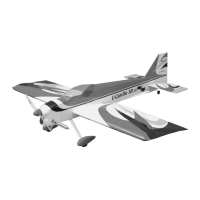
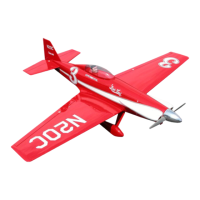
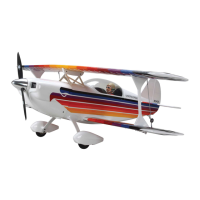
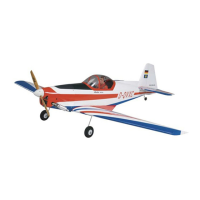
